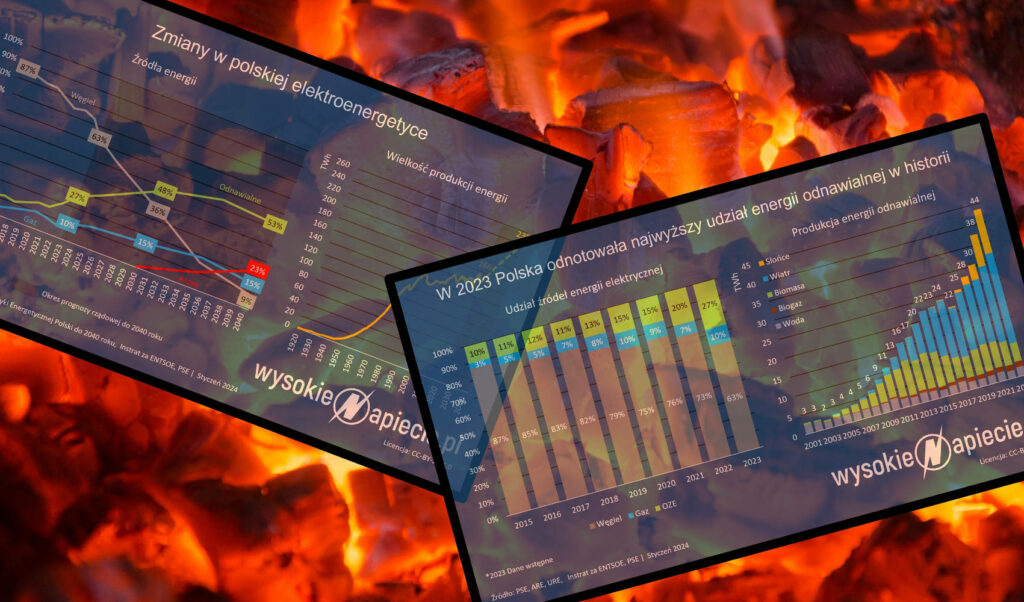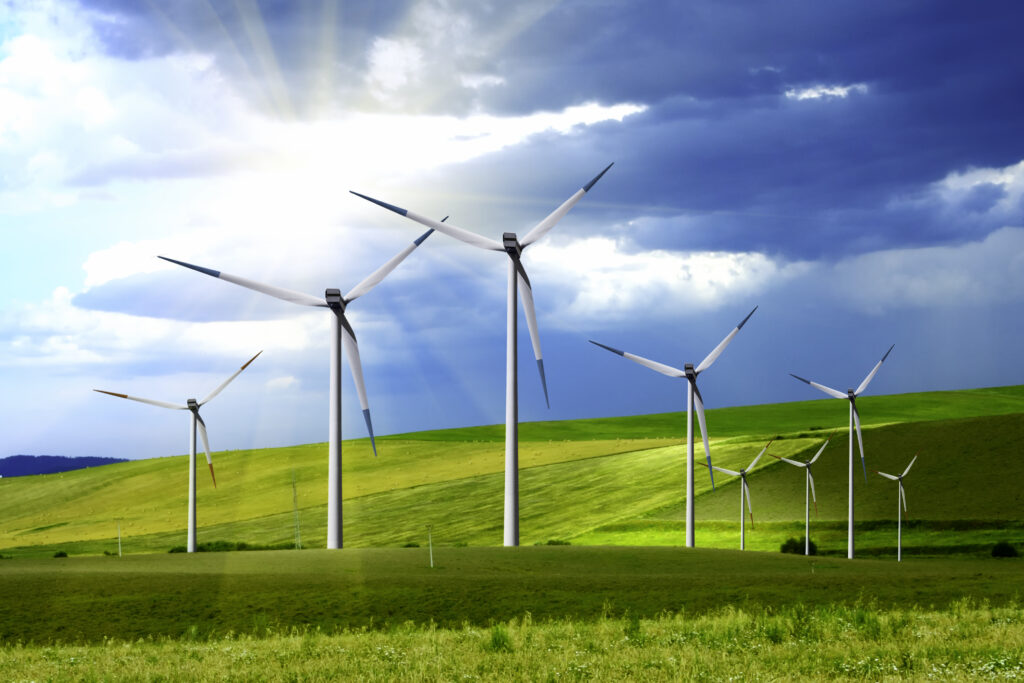According to preliminary data from PSE, ARE, and ENTSOE, analyzed by the WysokieNapiecie.pl portal, Poland produced almost 166 TWh of electricity in 2023. Of this, 44 TWh came from renewable energy sources, with half of it supplied by onshore wind farms.
The share of coal in Poland’s electricity production in 2023 decreased to 63%, the share of renewable sources increased to 27%, and the share of gas reached 10%. While the gas share remains at the level observed in 2020, coal and renewable sources demonstrated the fastest changes in history.
Renewable energy sources increased their share in the national energy mix from 20% to 27% over the course of the year, while the share of coal decreased from 73% to 63%, reaching the lowest level in over 100 years of Polish power engineering history.
This pace aligns with the latest scenario from the Ministry of Climate and Environment, formed after Russia’s aggression against Ukraine and the outbreak of the fuel war between Russia and the EU. The upcoming update to Poland’s Energy Policy assumes that over the next decade, the share of coal will continue to decline at a similar rate, reaching just under 20% by 2035.
In 2023, such significant dynamics of changes were possible due to the convergence of several factors. A key factor was, of course, the increase in installed capacity in renewable energy sources, especially in photovoltaics (mainly residential) and wind farms. To a small extent, hydrological conditions also contributed (up until November, hydroelectric power plants supplied the system with 25% more energy than the previous year).
However, a significant role was played by the decrease in the total national energy production, primarily attributed to coal-fired power plants. From January to November, electricity generation in brown coal-fired power plants decreased by as much as 27% compared to the same period in 2022, while coal-fired power plants provided consumers with 17% less electricity during this time.
The decrease in production was largely a result of a significant drop in demand from consumers both domestically (by over 3% year-on-year) and abroad. While in 2022 Poland exported a net of over 1 TWh of electricity, in 2023 imports exceeded exports by nearly 4 TWh.
The abrupt change in the energy mix had a significant impact on the domestic market for coal. From January to October, professional power plants burned just under 24 million tons of coal, compared to over 29 million tons in the same period the previous year, and a total of 38 million tons of coal throughout 2021.
The social agreement for the mining sector envisages maintaining the capacity to extract coal that exceeds the demand anticipated by the government. This could imply the necessity of subsidizing coal exports.












